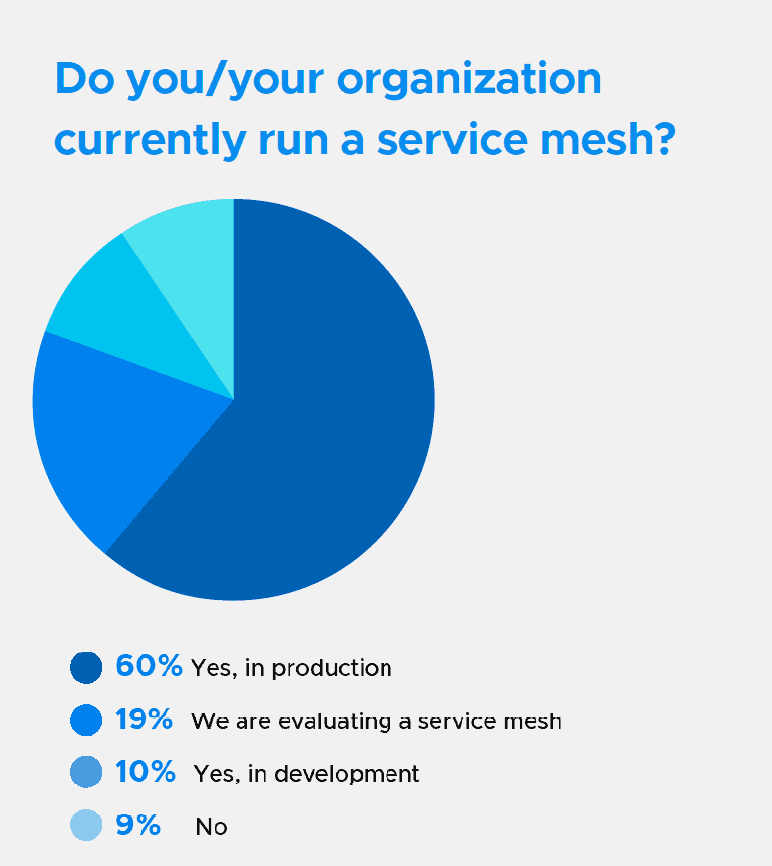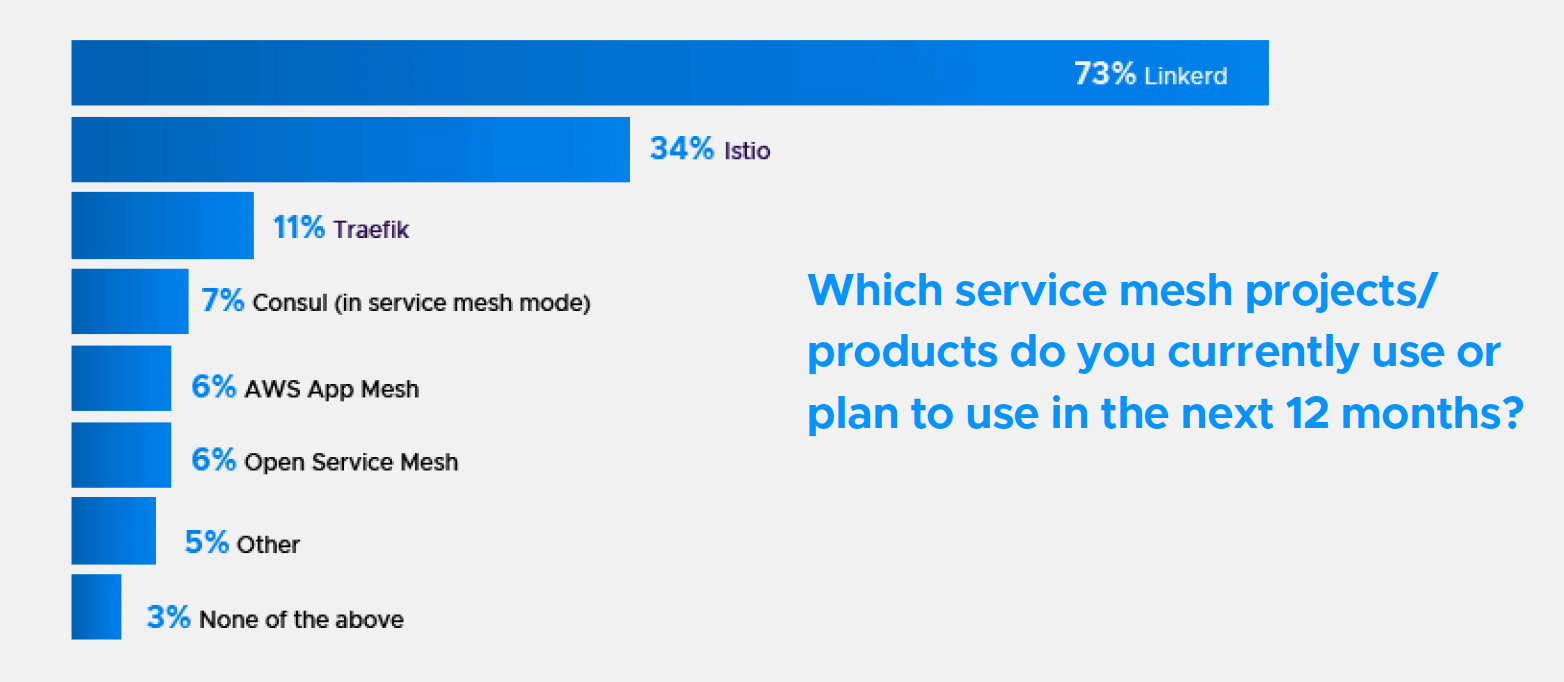CNCF conducted a microsurvey of the cloud native community at the end of last year to discover how organizations adopt service meshes. Overall we found that adoption is high and growing, but the community is still working through some growing pains. Download the report to see the full results.
Cloud native is driving digital transformation, but as more applications and services are deployed using a diverse technology stack, it has become challenging to deliver and manage performance and availability. A service mesh provides an answer, creating a dedicated layer that handles service-to-service communications, ensuring consistency and reliability of services, security, and observability.
It’s no surprise that the service mesh has become a key component of cloud native infrastructures. Of the 253 survey respondents, 70% run a service mesh in production or development, and 19% are evaluating one.

As service mesh grows, so does the number of projects. Participants picked from a list of 15 projects or products they currently use or plan to use in the next year. Two led the field: Linkerd and Istio with 72% and 34%, respectively.

There’s plenty of interest in service mesh, but there are hurdles to adoption, so we asked survey participants to rank them. First, non-technical challenges, which should be familiar to any newer technology, include:
- shortage of engineering expertise and experience (47%),
- architectural and technical complexity (41%),
- and a lack of guidance, blueprints, and best practices (36%).
When questioned about technical challenges, respondents reported struggling in various areas, including:
- Integration (32%),
- reliability and consistency (26%),
- Defining policies (22%),
- And monitoring and tracing (22%).
Download the full report to learn more, including the top features users look for in a service mesh and where organizations run their meshes.
The microsurvey was designed by CNCF and TAG Network and conducted between November and December 2021 among 253 members of the CNCF and Kubernetes communities. The full data will also be made available on GitHub.